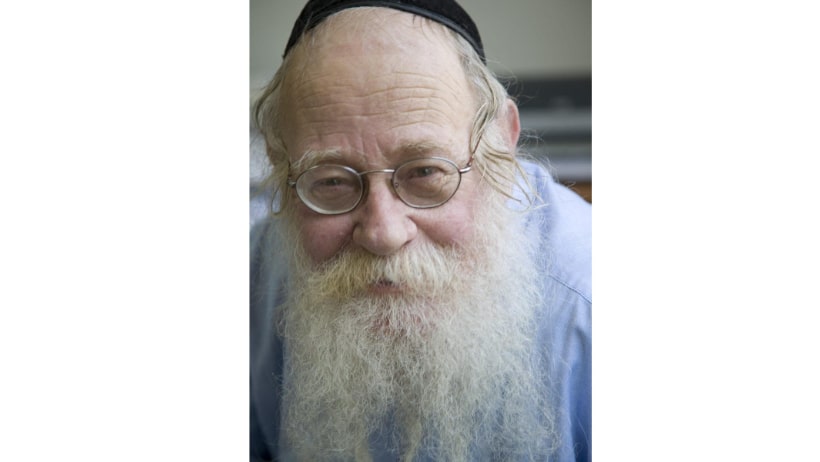Oasis Songs: Musings from Rav D
Friday, August 7, 2020 / 17 Av 5780
Summary: This week’s Oasis Song focuses on Rabbi Adin Steinsaltz, who died and was buried today in Israel. If you are unfamiliar with his name, Time Magazine once said he possessed a once in a millenium mind. That may be an understatement.
Rabbi Adin Steinsaltz died today and was buried In Jerusalem. For those unfamiliar with his name, he was the last “gadol,” the last “great one.” It would be very difficult to overstate the importance of this scholar or his contributions to the Jewish world.

His Torah learning was vast, and his accomplishments even greater. He created a nearly line by line commentary on the Talmud. Had he only done this, it would have put him in the same category as Rashi, the eminent French scholar who supplied us with a full commentary on both the Torah and the Talmud. Yet his commentary was accompanied with a modern Hebrew translation, as well as an English version. This opened the way for new generations to gain access to one of the most canonical and central Jewish texts.
It is virtually unthinkable that one person in today’s world could be responsible for such a far-reaching and monumental work. Indeed, the two other main translations of the Talmud into English are the Soncino edition and the Artscroll version. Each was composed with vast teams of scholars. This makes his erudition even more evident.
Additionally, and unlike the Artscroll translation of the Talmud which “spoon-feeds” students the meaning of complex passages, his version stayed closer to the basic meaning. As such, it was a much better tool for learning how to learn Talmud.
Many rabbinical students took advantage of their year in Israel to expand their Judaics library. The vast number of bookstores and the demand for Jewish books created a wonderfully competitive marketplace, and the price was often 40-60% less expensive than acquiring the same work in America.
While Laura and I were in Israel, I had to make a decision whether to invest in an Artscroll Talmud or the Steinsaltz version. I chose the Hebrew Steinsaltz version for two reasons. The primary reason is the one given above—my desire to learn how to learn Talmud excluded the Artscroll. The second reason is that in the 1990’s, Random House began to publish an English version of Steinsaltz’s modern Hebrew translation and commentary. While they never completed the task, those books were my first taste of the Talmud and opened an important door to Jewish learning.
It is worth noting that this monumental task of translating the Talmud was hardly the limit of his output. He also penned some 60 other books on a vast range of topics and subjects. I think I have studied 7 of those—which is humbling when all I had to do was read them and he wrote another 53!
In Judaism, one of the ways we honor the memory of someone who has died, particularly a Jewish scholar, is to learn mishnayot (sections of the Mishnah). Traditionally, the mishna sections that are studied are picked by spelling out the deceased person’s name with the opening letter of a given mishnah.
The reason for dedicating learning in this manner stems from a belief that it helps with the “illui neshamot” or the soul ascent.
While it is still summer, and people are interested in finding activities to keep their minds occupied during quarantine, you might consider reading one of Rabbi Steinsaltz’s books.
Here is a short, curated list with a brief description:
- The Thirteen Petalled Rose—This is a book, almost a primer really, on Jewish mystical belief. It touches on topics such as Jewish existence and belief, the soul, and the search for the self.
- Simple Words: Thinking About What Really Matters in Life—In this work, Rabbi Steinsaltz meditated on some “simple” words, such as friends, family, love, God, death, faith. This is a beautiful reflection on being human. It is a book I have read more than once.
- Teshuvah—this book was geared towards “ba’alei teshuvah,” people who were previously unreligious and have embraced an Orthodox lifestyle. Despite that mission, this is a wonderfully warm book about taking on Jewish practice in a guilt-free manner. It’s worthwhile as a companion to think about what sort of Jewish life you might want to “grow.”
- The Essential Talmud—here Rav Steinsaltz gives a concise overview of the Talmud. He explains its history, as well as the methodology it uses to put forth arguments.
- Change & Renewal: The Essence of the Jewish Holidays & Days of Remembrance—As we approach the High Holidays, this book does a good job of explaining them as well as other Jewish holidays.
Barukh Dayan Emet. Praised is the One True Judge, who gave us such an amazing teacher. Rabbi Steinsaltz’s name and memory will be an enduring blessing.
Shabbat shalom,
Rav D
Shabbat Table Talk
- Who was the smartest person you have ever met? What sort of impact did they have on you?
- What do you think accounts for incredibly prolific and gifted people? How does the nature/nurture argument apply to them?
- Have you ever had a teacher who not only changed your life, but in whose memory you took on a task or a challenge?
If you’d like to continue this discussion, follow this link to CNS’s Facebook page to share your own perspectives on the topics raised in this week’s Oasis Songs. Comments will be moderated as necessary.



